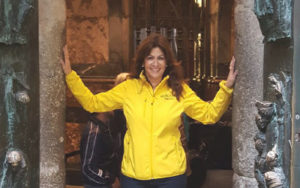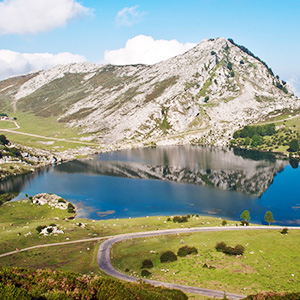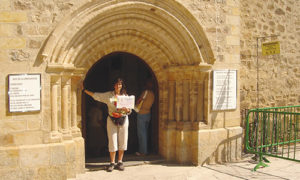Three brave ladies at the Lebaniego Pilgrimage- Part 1
The Camino Lebaniego Pilgrimage originates in the 7th century to venerate the cross of Lignum Crucis. Also known as the Vera Cruz or True Cross, said to contain the largest remaining piece of the original cross of Christ. more and more people are walking this amazing route where you explore the region of Cantabria in Spain , as we make our way to the Monastery of Santo Toribio in Liébana walking along the Cantabrian coast, a green an beautiful region of Spain.
Quite a paradise for nature lovers, the route starts at the Cantabrian Sea and goes through ancient forests until it crosses the majestic Picos de Europa national park. Holy Jubilee Year 2017! This year is Jubilee year for this Camino. It means that if you do this Camino, you will have the opportunity to receive a Plenary Indulgence from the church after completing it.
Marly’s Story
Three brave ladies with the idea of doing this beautiful off the beaten track Camino trail, the Camino Lebaniego Pilgrimage: me, my cousin and a Spanish friend.
How did we come up with the idea of doing the Lebaniego Pilgrimage?
The Spanish girl mentioned the trip to us and we thought it was a
ery interesting idea. After only 4 days we hopped on a train and we were heading from Madrid towards Santander. We used the time on the train to read all the Lebaniego Pilgrimage documentation that we had been able to find before leaving.
Keep in mind that this was done in 2006 without much information or time. We really started designing the route without an actual itinerary on hand. We discovered that every stage of the route had several Camino options. To be honest, we felt a little bit overwhelmed about it.
Our intention was to start the Camino in Santander and walk to Santillana del Mar (about 32kms). We decided that this first stage was too long and difficult because it followed paved highway in industrial settings. Therefore, we were advised to start in a much prettier setting: Santillana del Mar. We took a bus from Santander to Santillana del Mar, and our adventure started.

First Stage: From Santillana del Mar to Comillas.
I was totally impressed with the charm of Santillana del Mar, a beautiful city made of stone. It was impossible to avoid walking through it and eating delicious local pastries. It is an absolute must. From Santillana del Mar there are two Camino options. We planned on an itinerary that goes through the towns of Arroyo, Oreña, Caborredondo and Ciguenza. It is not a difficult hike because you walk through lovely small towns.
We all had experienced walking the Camino de Santiago in the past so we were expecting lots of pilgrims on the road. The Lebaniego Pilgrimage was different, we didn’t find many pilgrims and the few pilgrims we saw were staying at a Comillas hostel. I don’t want to mention the hostel’s name because we didn’t have a very pleasant experience with the owner. However bad experiences lead to good ones: because we had a bad experience at the hostel, we were able to meet the mayor of Comillas, a lovely lady who was very nice to us.
Comillas is a town that definitely deserves a visit. Located at the Cantabric coast, you can walk on its beach and through its beautiful cobblestone streets. It has a lovely fishing port, an interesting university and one of Gaudi’s iconic buildings: Capricho de Gaudi.

Second Stage: Comillas to Abanilla
We found several off the beaten track trail options for this Camino. Most of our decisions were done through pure instinct and recommendations. (Haha yes, very adventurous!) Every night we would ask the people from each town for recommendations.
From Comillas we took the Rio de la Rabia exist, towards San Vicente de la Barquera. We crossed the bridge, enjoyed the beauty of Oyambre Natural Park and the calmness of the river.
Although you walk along the highway it is nice because of its beautiful and green Cantabric landscapes. We passed through the towns of: Rioturbio, El Tejo and La Revilla. We crossed the San Vicente river through the La Maza bridge, the largest Cantabrian bridge.
From there we could already see San Vicente de la Barquera. In this town there are two important Camino ways. You can head towards Santiago de Compostela through the Coast or you can take the Lebaniego Pilgrimage route. We ate a delicious Mariscada (a delicious local Seafood meal). We were thrilled to see our first Santo Toribio Marker right outside of San Vicente de la Barquera, heading to the lovely town of Abanilla. We were about to experience the true nature of going in a off the beaten track trail.
Please continue reading the second part of Marly’s story click here: Santo Toribio Pilgrimage

